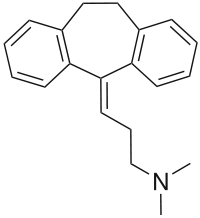
Apolipoprotein L1 is transcriptionally regulated by SP1, IRF1 and IRF2 in hepatoma cells
Sign Up to like & getrecommendations! Published in 2020 at "FEBS Letters"
DOI: 10.1002/1873-3468.13887
Abstract: Apolipoprotein L1 (APOL1) participates in lipid metabolism. Here, we investigate the mechanisms regulating APOL1 gene expression in hepatoma cells. We demonstrate that the −80‐nt to +31‐nt region of the APOL1 promoter, which contains one SP… read more here.
Keywords: hepatoma cells; sp1 irf1; irf1 irf2;

Siglec‐15 promotes the migration of liver cancer cells by repressing lysosomal degradation of CD44
Sign Up to like & getrecommendations! Published in 2021 at "FEBS Letters"
DOI: 10.1002/1873-3468.14169
Abstract: Sialic acid‐binding immunoglobulin‐like lectin‐15 (Siglec‐15) has been identified as a novel potential target for cancer immunotherapy. Here, we explored the role of Siglec‐15 in human hepatoma cells. In this study, we found that the expression… read more here.
Keywords: siglec; hepatoma cells; promotes migration; cd44 ... See more keywords

Aspirin modulates 2-hydroxyisobutyrylation of ENO1K281 to attenuate the glycolysis and proliferation of hepatoma cells.
Sign Up to like & getrecommendations! Published in 2021 at "Biochemical and biophysical research communications"
DOI: 10.1016/j.bbrc.2021.04.083
Abstract: Aspirin can efficiently inhibit the glycolysis and proliferation of cancer cells, however, the underlying mechanism is poorly understood. Here, we report that aspirin attenuates the glycolysis and proliferation of hepatoma cells through modulating the levels… read more here.
Keywords: hepatoma cells; glycolysis proliferation; proliferation hepatoma; proliferation ... See more keywords

Phenylpropanoid and dibenzofuran derivatives from Crataegus pinnatifida with antiproliferative activities on hepatoma cells.
Sign Up to like & getrecommendations! Published in 2019 at "Bioorganic chemistry"
DOI: 10.1016/j.bioorg.2019.103354
Abstract: Eleven aromatic compounds, including four pairs of undescribed phenylpropanoids and two undescribed dibenzofurans (1a/1b-4a/4b and 5-6), were isolated from the fruits of C. pinnatifida. Their structures were established by extensive spectroscopic analyses. Their relative and… read more here.
Keywords: dibenzofuran derivatives; derivatives crataegus; hepatoma cells; antiproliferative activities ... See more keywords

Characterization of genetically engineered mouse hepatoma cells with inducible liver functions by overexpression of liver-enriched transcription factors.
Sign Up to like & getrecommendations! Published in 2018 at "Journal of bioscience and bioengineering"
DOI: 10.1016/j.jbiosc.2017.07.011
Abstract: New cell sources for the research and therapy of organ failure could significantly alleviate the shortage of donor livers that are available to patients who suffer from liver disease. Liver carcinoma derived cells, or hepatoma… read more here.
Keywords: enriched transcription; transcription factors; hepatoma cells; mouse hepatoma ... See more keywords

Aspirin inhibits the proliferation of hepatoma cells through controlling GLUT1-mediated glucose metabolism
Sign Up to like & getrecommendations! Published in 2018 at "Acta Pharmacologica Sinica"
DOI: 10.1038/s41401-018-0014-x
Abstract: Aspirin can efficiently inhibit liver cancer growth, but the mechanism is poorly understood. In this study, we report that aspirin modulates glucose uptake through downregulating glucose transporter 1 (GLUT1), leading to the inhibition of hepatoma… read more here.
Keywords: hepatoma; hepatoma cells; controlling glut1; glucose metabolism ... See more keywords

Identification of rhythmic human CYPs and their circadian regulators using synchronized hepatoma cells
Sign Up to like & getrecommendations! Published in 2020 at "Xenobiotica"
DOI: 10.1080/00498254.2020.1737890
Abstract: Abstract Cytochromes P450 (CYPs) catalyze a great number of metabolic reactions that have profound effects on the biological activities of xenobiotics and endobiotics. In this study, we aimed to characterize rhythmic expressions of drug-metabolizing CYPs… read more here.
Keywords: hepatoma cells; using synchronized; human cyps; box ... See more keywords

Time Course Effect of R-Alpha-Lipoic Acid on Cellular Metabolomics in Cultured Hepatoma Cells.
Sign Up to like & getrecommendations! Published in 2017 at "Journal of medicinal food"
DOI: 10.1089/jmf.2016.3837
Abstract: Alpha-lipoic acid (LA) is a powerful antioxidant. LA has two enantiomers, R(+)-LA (R-LA) and S(-)-LA (S-LA). Of these, R-LA is naturally occurring and an essential cofactor in energy metabolism. R-LA treatment has been reported to… read more here.
Keywords: hepatoma; hepatoma cells; time course; alpha lipoic ... See more keywords

Expression levels of the metalloproteinase ADAM8 critically regulate proliferation, migration and malignant signalling events in hepatoma cells
Sign Up to like & getrecommendations! Published in 2020 at "Journal of Cellular and Molecular Medicine"
DOI: 10.1111/jcmm.16015
Abstract: Hepatocellular carcinoma (HCC) is one of the most common metastatic tumours. Tumour growth and metastasis depend on the induction of cell proliferation and migration by various mediators. Here, we report that the A Disintegrin and… read more here.
Keywords: proliferation migration; hepatoma cells; migration; expression ... See more keywords

Role of miR-498 Combined with CREB1 in Apoptosis and Invasion of Hepatoma Cell Line
Sign Up to like & getrecommendations! Published in 2022 at "Computational and Mathematical Methods in Medicine"
DOI: 10.1155/2022/9621764
Abstract: Objective To detect the expression levels of miR-498 in the hepatoma cells and to clarify the biological roles of miR-498 in hepatoma by investigating CREB1, which is the target of miR-498. This study provides a… read more here.
Keywords: hepatoma cells; apoptosis; mir 498; hepatoma ... See more keywords

Ginkgo biloba induces different gene expression signatures and oncogenic pathways in malignant and non-malignant cells of the liver
Sign Up to like & getrecommendations! Published in 2018 at "PLoS ONE"
DOI: 10.1371/journal.pone.0209067
Abstract: Ginkgo biloba (EGb761) is a widely used botanical drug. Several reports indicate that EGb761 confers preventive as well as anti-tumorigenic properties in a variety of tumors, including hepatocellular carcinoma (HCC). We here evaluate functional effects… read more here.
Keywords: ginkgo biloba; malignant cells; hepatoma cells; tumorigenic properties ... See more keywords